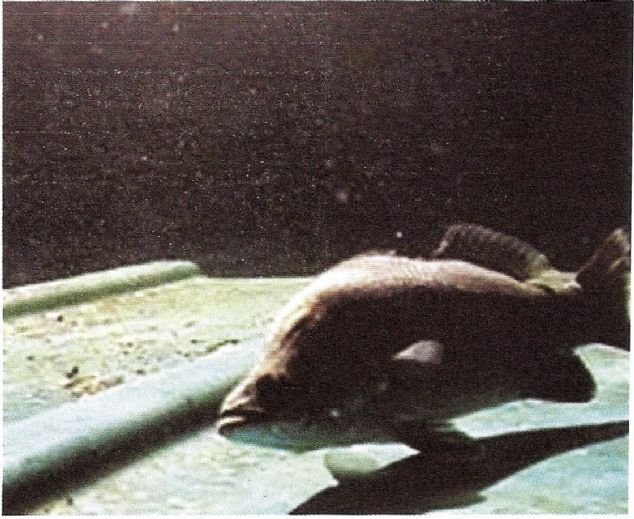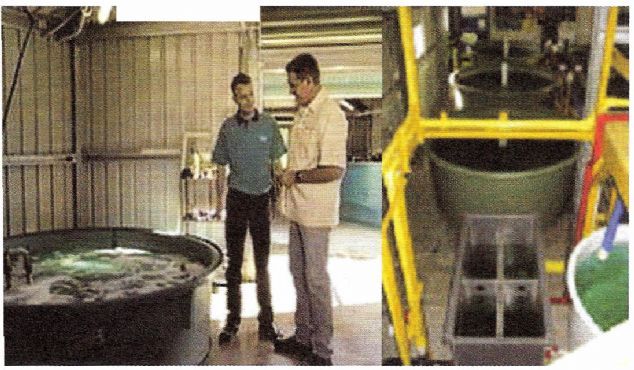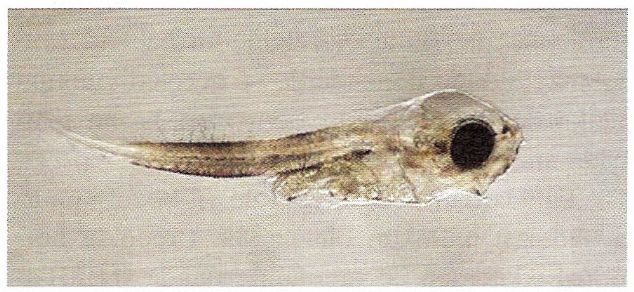
|
 |
Kitaplar » AQUACULTURE » Asian Sea Perch Breeding (Barramundi) (Lates calcarifer) ASIAN SEA PERCH BREEDING (Barramundi) (Lates calcarifer) Barramundi is a fish species common in South East Asia and Australia regions. It is a fish that has been successfully bred. It has been cultivated in Thailand for many years. It is a very large fish that can reach 180 cm in length and 60 kg in nature. On the other hand, fish produced through breeding are generally marketed between 0.5 and 3 kg. Breeding studies on this fish started in Australia in 1984. Successful offspring production was achieved with an incubator established in 1986 and those built afterwards. Barramundi is a fish that can live in sea and fresh water. It migrates between the sea and fresh water at various times of its life. For this reason, both freshwater fish and marine fish farming can be done. It can only be produced in sea water in the larval period. In the juvenile period, it can also be bred in brackish water. It is recommended that salinity should not be less than 22% during the larval period. Generally, mail are not bigger than 80 cm. Fish caught larger than 100 cm are generally female. It is seen that males in breeding conditions turn into females in smaller sizes. In this respect, it is an interesting fish. They lay eggs during periods of full moon and at night. Reproduction periods are between November and March. It is possible to collect eggs from fish all year round by light and water tenpareture control. Hormones are also used in production. (LHRH-a- per kg live weight; 19-27 mg). Three techniques are used in the production of larvae. These can be defined as clean water technique (intensive production), green water technique (semi-intensive) and pool production (extensive production). Some of these methods are applied in sea bream and sea bass farming in our country. It would be good to explain the method a little, with the idea that the pool breeding technique can be addressed for some breeding and can be an example. The clean water technique is similar to the sea bream and sea bass growing technique in our country. In this method, fertilized eggs are taken into 1,000 liter tanks. 1.200 eggs are stored in each liter. Larvae hatch after 14-17 hours at 28 degrees. The stock amount is reduced to 30 individuals / liter initially, 15 individuals / liter on the tenth day and 6 individuals / liter larvae on the twenty-first day. Feeding is applied with 15-20 pcs / ml rotifer between 2-14 days. It is applied as 0.5 pcs / ml rotifer and 2 pcs / ml artemia between 12-15 days. Between 15-26 days with artemia larvae 5-10 ad / ml. On the twenty-first day, microcapsule feeds are started.
 Picture: Barramundi breeding work in Australia It is reported that the vitality is higher in the green water technique and it has been recorded that it exceeds 50%. In this method, 5,000 liter tanks are used. On the first day, 1,200 lt of sea water is put into the tank by passing through 5 micron filters. In addition, water with algae containing 50 pcs / ml "Nanocbloropsis oculata" in 600 liters is added. In addition, 20 pcs / ml rotifer is placed per liter. Later, it is stocked with 50-170 pcs / lt larvae. Rotifer density is continued as 20 ad / ml until the ninth day. From the second day, 10 grams of microcapsule feed such as frippack is added to each tank. On the fourth day, another 600 liters of plankton water is given to the tank. On the sixth- ten- twelfth and thirteenth days 600 liters of filtered sea water is added. From the eighth and tenth day, 2 ad / ml Artemia larvae are given. On the 10th and 15th days, the amount of artemia is increased to 4 units / lt. 1/3 of the artemia given from the thirteenth day is enriched. Half of the water is renewed on the fifteenth day and the larvae are harvested in the tank on the sixteenth day and taken for pre-growth. Larva production in the pond is a work that can be applied to some breeders in our country. In production, earthen ponds between 1 and 10 decares are used. Depth is maximum 1.8 meters. At the central point is a water drain made of concrete. The water taken from the sea is passed through 300 micron filters and given to the pool. Thus, the entry of eggs and offspring of other creatures is prevented. The pool is filled 10 days before stocking the larva. On the first and second days, di ammonium phosphate fertilizer (DAP) is applied in a way equivalent to 5,3 kg per 1 ton of water capacity. On the third day 450 lucerna is given per hectare On the sixth day, 5,3 kg DAP is added to one ton of water again. On the eighth day, newly hatched larvae are released into the pond. On the tenth, fourteenth and twentieth days, 150 kg / hectare lucerna is given. 5,3 kg / hectare DAP is applied on the twelfth and eighteenth days. Plankton reproduction and larval development in ponds should be checked daily with the secchi disc. If a different plankton reproduction is observed, an investigation should be done and a green color should be aimed with the help of algae. The amount of oxygen should be carefully studied. If the oxygen amount falls below 3 mg / l, ventilation should be applied. Many zooplankton that will breed naturally in the pond will be the food of the larvae. Stocking of larvae is suggested as 900.000 equivalent per hectare. Development is very fast and the fry reach 25-35 mm in 2-3 weeks. They are harvested at this size and taken to growth tanks. Storage in tanks is recommended as 5,000- 10,000 pieces per m3. If a new production is to be made, the pool is emptied, dried, driven and kept dry until a new production. Barramundi larvae undergo metamorphosis on the twenty-first day. During this period, they are 20-25 mm tall. After this period, they can be fed with artificial feed. After they are grown up to 80 mm in tanks, they are taken to production areas or net cages and subjected to fattening. Cannibalism is common in growing offspring. For this reason, it is necessary to classify puppies smaller than 50 mm according to their height every 3-4 days. In earthen ponds, offspring can survive at 35 degrees Celsius and even 0.50% salinity. 15-40 kg / m can be stocked in net cages. In Australia, fattening work is quite common in tanks kept in water, which is extracted from underground with a motopump. Artificial baits are generally used in large fish feed. These feeds are similar to the feeds used in sea bream and sea bass in our country.
 Picture: Barramundi larva obtained in a hatchery. |




